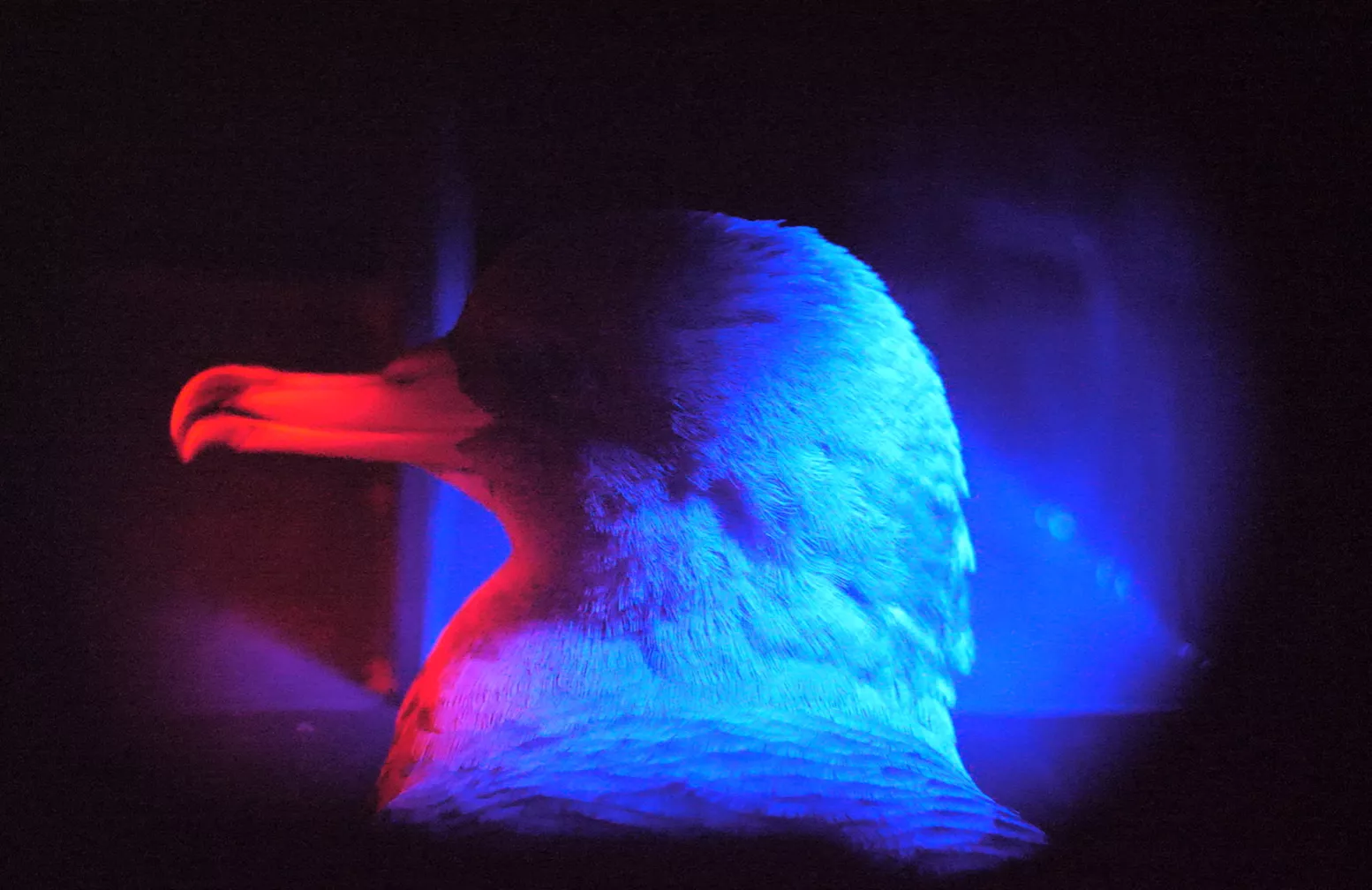In the highly industrialized, fast-paced society where we live today, disorientation from natural circadian rhythms has become commonplace for humans, and possibly even more so for animals. One case study in particular drew the attention of American artist Ellie Ga when she first attended Walk&Talk in 2021, an arts festival on the island of San Miguel in the Azores archipelago, west of Portugal. Upon arriving at this destination for the festival, Ga immediately noticed a distinct sound of chattering. When she inquired about its origins, she was told it was the native Cagarro birds.
Cagarros (also called Scopoli’s shearwater) are a species of seabird, 75% of which inhabit the volcanic Azores islands. They are apex predators at sea and always return back to the same place on land after traveling to hunt. In their population reproduction, an individual will lay one egg a year in a dark burrow on the island, which the fledgling leaves in late October after the breeding season ends. However, these baby birds are often completely disoriented by the artificial lights on the island, becoming lost or crashing into lights and being killed on the roads. There is an organization on the island called SOS Cagarro, in which volunteers can help to rescue these birds from unsafe areas and reorient them.
When Ga was tasked to make a piece of art for the festival, this problem of disorientation surrounding the Cagarros seemed like a fascinating idea to explore through mixing different pedagogies, like science and storytelling. Inspired by the participatory science of the SOS Cagarro mission, Ga set out to create an experience where participants gather on the side of a cliff at nighttime on San Miguel and engage in deep listening. Recognizing the importance of sound as some people’s primary form of orientation, she invited various individuals who were blind or low-vision to be part of the project. Providing tactile cards to everyone on the cliffside, she explains during the experience (which can be heard in the audio installation) that each card has a unique shape to make it distinct from the other, and each represents a stage in the lifecycle of a Cagarro. She then goes back and forth asking questions to both a marine biologist and the president of the included association for people with blindness or low vision, in order to get both of their perspectives throughout this exercise.
In converting this experience on the Azores into the artistic sound installation presented at Bryn Mawr, Ga includes both English and Portuguese spoken in the clip, the official language spoken in the Azores. In the side room of the campus center, she recreated the set up of the cliffside experience with tactile cards on seats around the tv, which played the installation on a continuous loop for students to follow along. Titled “A Jangada” (‘The Raft” in Portuguese), Ga highlights the Cagarro phenomenon of forming a group to sit on the surface of the ocean and communicate about food sources or practice survival skills — called a “raft” by some marine biologists.
This installation by Ellie Ga is part of her ongoing multi-year residency at Bryn Mawr, and as part of the residency program, she is allowed access to comb through Special Collections here at Bryn Mawr, drawing on various fields of knowledge and mixing pedagogies in her artistic practice. In addition to introducing the installation, Ga also invited students to engage in interviews with her about their experiences being disoriented by light, expressing that it helps to understand how it affects humans too, and not just animals. You can experience the “A Jangada” sound installation at the link here.
